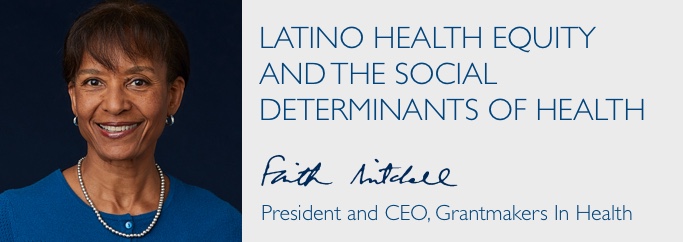
In 2006, the demographer Marta Tienda and I edited the report Hispanics and the Future of America, on the status of the Latino population, including education, employment, and health. The report identified promising aspects of Latino health, such as women’s excellent birth outcomes, along with troubling trends, such as rising rates of childhood obesity. Since that time, with the availability of more and better-quality data, the disturbing trends have become clearer. They include high levels of obesity, asthma, and depression among children; chronic diseases among adults; and multiple barriers to accessing health care related to language, costs, not having insurance, and immigration status. Recently, uncertainty about immigration laws and fear of deportation have created an atmosphere that is keeping even legal immigrants from using health care facilities. Altogether, it is a challenging time for the pursuit of health equity—but also an important time for action.
Earlier this year, with the goal of generating new insights and ideas about the role funders can play to advance health equity for Latinos and other people of color in California, GIH and Hispanics in Philanthropy (HIP) convened a meeting in San Francisco for funders and community partners on building a movement for Latino health equity. The discussion focused on California, which is home to the country’s largest Latino population, but its conclusions are applicable to many other settings. Over the course of the day, we discussed promising practices for improving health outcomes in Latino communities and opportunities for collaboration with other communities of color. Funders and other partners described how they were broadening the definition of health beyond access and clinical care and were beginning to build support for health equity.
The Issue Focus article “Investing in Latino Leadership for Health Equity and Justice” that is part of this Bulletin describes the meeting in more detail. What excited me most about this work is the fact that focusing on the social determinants of health has become a central element of efforts to advance health equity, and that the perspective is being applied broadly and creatively. Ensuring that Latinos have access to high-quality health care is important, but so is focusing on policy and systems change and using a wide variety of approaches to support health equity, such as food security, air quality, clean drinking water, housing, health care, education, employment, immigrant rights, domestic violence, open space, and neighborhood safety.
Communities need philanthropy to embrace and support comprehensive approaches to health that pay attention to institutional inequity, poverty, employment disparities, inadequate access to public health services, and community violence. A landscape assessment of California organizations conducted by HIP in conjunction with the University of California, San Francisco, has identified broad support for defining health equity as “looking at key factors that reflect a strong community” like economics, housing, and the environment, and agreement that it is important to address these core issues in addition to health care access and treatment. In a forthcoming HIP report, the assessment’s results will be described in more detail.
The outcome of the GIH-HIP meeting was a list of recommendations for grantmakers. The list reflects the perspective of looking at key factors that reflect a strong community, and our maturing understanding of the social determinants of health. I encourage you to check it out!

